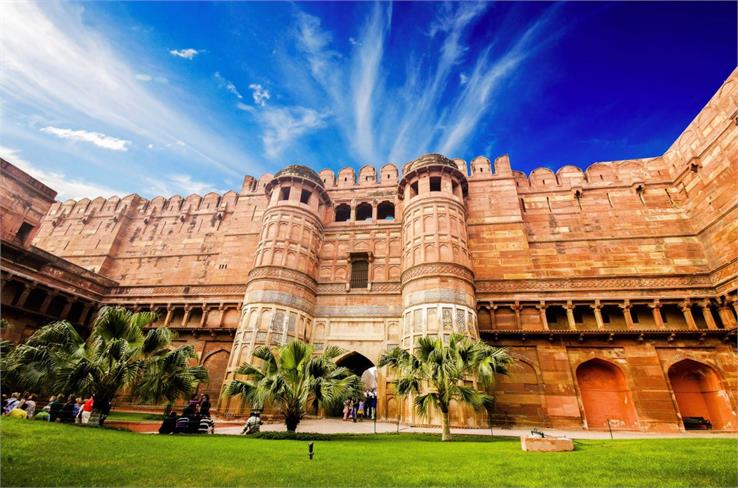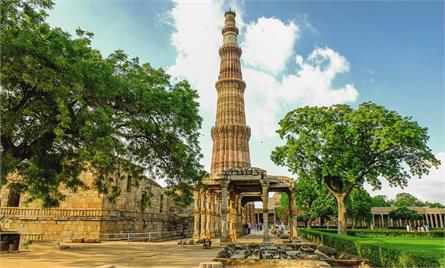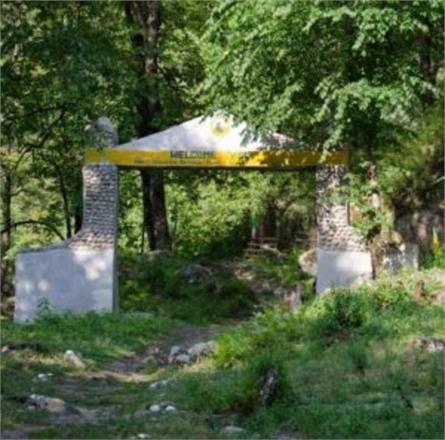Agra Fort : Majestic Jewel of Mughal Architecture

Agra Fort is located in the city of Agra, Uttar Pradesh, India. It is situated on the right bank of the river Yamuna, about 2.5 kilometers northwest of the Taj Mahal. Agra Fort, also known as the Red Fort of Agra, stands as a testament to the grandeur of India's rich history and architectural heritage. This colossal fort has witnessed centuries of historical events, royal intrigue, and cultural splendor. Explore Agra Fort with its history, architecture, and captivating stories.
Also Read: UNESCO World Heritage Sites of India
A Historical Legacy of Agra Fort | Powerful Dynasty
The history of Agra Fort is intertwined with the rise and fall of powerful dynasties in India. Emperor Akbar the Great laid the foundation for this magnificent fort in 1565, using bricks from the remnants of ancient temples. However, during the reign of his grandson, Shah Jahan, the fort underwent its most significant transformation.
Shah Jahan, renowned for commissioning the Taj Mahal in memory of his beloved wife, Mumtaz Mahal, also left an indelible mark on Agra Fort. He rebuilt many of its structures using the finest white marble, turning it into a grand palace complex. The fort then became a symbol of Mughal opulence and power.
Also Read: Seven Wonders of the World, The Beautiful Taj Mahal
A Marvel of Mughal Architecture
One of the most striking features of Agra Fort is its imposing red sandstone walls, which stretch for over 2.5 kilometers and stand 70 feet tall. These walls served as a formidable defense against invaders and a canvas for intricate carvings and designs.
As you enter the fort through the Amar Singh Gate, you will enter a world where architecture blends seamlessly with aesthetics. The Diwan-i-Aam, or Hall of Public Audience, showcases a beautiful blend of Persian and Indian architectural styles, featuring stunning pillars and a raised platform where the emperor would hold court.
Moving deeper into the fort, you'll discover the Diwan-i-Khas, the Hall of Private Audience, where Shah Jahan received special guests. The highlight of this structure is the iconic Peacock Throne, a magnificent seat adorned with precious gems, which Nadir Shah of Persia later plundered.
The Sheesh Mahal, or Palace of Mirrors, is another marvel within the fort. Its walls are covered in intricate mirror work, creating a glittering effect when illuminated by candles and lamps. This space is a testament to the Mughal fascination with light and reflection.
Intriguing Stories
Agra Fort is not only an architectural masterpiece but also a repository of captivating stories. The most poignant of these stories is the house arrest of Shah Jahan by his son, Aurangzeb, in the Musamman Burj, a beautiful octagonal tower overlooking the Yamuna. From here, Shah Jahan gazed at the Taj Mahal in his final years, unable to visit his beloved wife's mausoleum.
Another fascinating tale is that of the hidden escape route from Agra Fort known as "Shahi Burj ki Dibiya." This secret tunnel is said to lead from the fort to the Taj Mahal, intended for the emperor's safe passage in times of danger.
A UNESCO World Heritage Site
In 1983, Agra Fort was designated as a UNESCO World Heritage Site, recognizing its cultural and historical significance. This prestigious status has ensured its preservation for future generations to admire and cherish.
With its rich history, awe-inspiring architecture, and intriguing stories, Agra Fort remains an integral part of India's cultural heritage. As you explore its grand halls, exquisite palaces, and hidden passages, you can feel a deep connection to the bygone era of the Mughal Empire. A visit to Agra Fort is not just a historic site tour; it is a journey back in time, allowing you to immerse yourself in the splendor and grandeur of India's regal past.













